THE AFRICAN TIME MACHINE
Curator: Silke Schmickl
Very often, a future is decided by its owners. In The African time machine, African video artists and her diasporas examine a possible future of Africa by looking at its past and present. This selection of work from the IN/FLUX series takes the spectator on a journey throughout the hands of African time and space: travelling across the remnants of its post-colonial era to the staged revolutions, interventions and reform that led to its current civilization today. The trip ends in a place of imagination, a kind of proposition, where destiny is dreamt and possibly coming to birth.
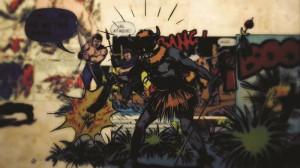
MY AFRICAN MIND (2010)
Bofa da Cara, Angola/Spain, 6:17 min
Cut‐outs of pictures drawn from comic books, movie posters, advertisements and 19th century missionary accounts flash across the screen, rendered in 3D. Moving back and forth between image and text, My African Mind interrogates the violence of the colonial gaze and its present-‐day avatars. Even as we fly through filmic landscapes of dramatically shifting foregrounds and backgrounds, the images grip us firmly. They insist that we face head-‐
on the (not so) past horror of one continent’s encounter with the other and the scars this has left on the face of the present.
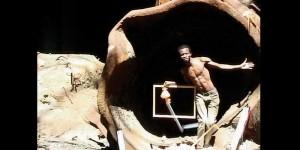
MÉMOIRE (2007)
Sammy Baloji, Democratic Republic of Congo, 14:00 min
In the town of Lubumbashi, in the Katanga province of eastern Congo, stand the ruins of what was once a thriving copper mining industrial site. Against this backdrop, Sammy Baloji’s haunting images – part documentary, part dreamscape – meet the sinuous choreography of dancer Faustin Linyekula and a soundtrack of successive leaders (Patrice Lumumba and Joseph Kasa‐Vubu,Mobutu Sese Seko and Laurent‐Désiré Kabila) promising political and economic renewal. Masterfully woven together, these elements tell a history of colonial violence, followed by postcolonial hope and its gradual demise.
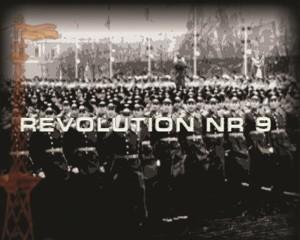
Society of the Spectacle (2011)
Aryan Kaganof, South Africa, 3:36 min
Black and white media images flash across the screen at break-‐neck speed to a hypnotic soundtrack. The urban narrative that results is slick, modernist, and without flaw. It demands our submission. It is at once seductive and, in its proficiency to captivate, slightly alarming. With its hammering pace and seamless composition, there is no place for intervention or insertion of alternative pictures. To elbow our way into the storyline would entail a brawl.
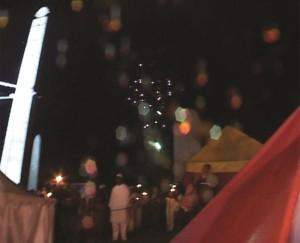
Lightning Strikes (2009)
Theo Eshetu, Ethiopia, 7:41 min
In 1935, the Italian army stole a historical monument from the city of Axum: a 24‐meter high granite obelisk dating from the 4th Century AD. In 1947, as part of a peace treaty, the Italian government agreed to return the obelisk. For decades, it reneged on its promise. Only in 2005, and after countless delays, was the monument returned. Theo Eshetu’s experimental documentary recounts this repatriation.
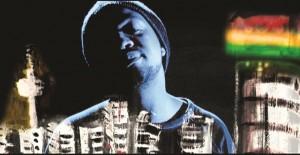
Itchy City (2006)
Kgafela oa Magogodi & Jyoti Mistry, South Africa, 5:12 min
Itchy City is a poem by Johannesburg‐based author and spoken word artist Kgafela oa Magogodi. It is part of a larger project, titled I Mike What I l ike: a play adapted for the screen by Magogodi and filmmaker Jyoti Mistry. The film melds sequences from a live performance of the poem with filmed and painted images of Johannesburg, resulting in a powerful commentary on the complexities and the absurdities of everyday life in South Africa’s economic capital..
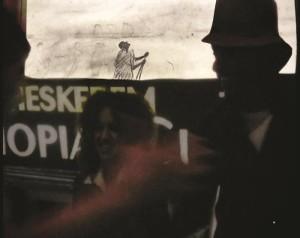
Hold de Door (2011)
Ezra Wube, USA/Ethiopia, 4:29 min
As a person of two cultures, the artist is in a continual dialogue between here and there, past and present, tradition and modernity. The artist’s effort to construct a narrative is left ambiguous, so that the line between what is real and what is imagined, what is sensical, and nonsensical becomes faint. By refusing a concrete representation, he have found the freedom to make art that is consistent with the flux of his life.

Ruling of the Night (2008)
Julia Raynham, South Africa, 4:00 min
Two dancers move from the heights of Table Mountain, overlooking Cape Town, to the bowels of the city: a car park and then the aisles of a supermarket lit ghastly white. They are accompanied by a bird of prey and stalked by the ghostly presence of a mystic gorilla. Following in their wake, we question what the human race and the late capitalist system, to which it is enthralled, have done to the cities they call home.
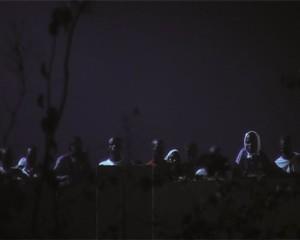
Kempinski (2007)
Neil Beloufa, Algeria/France, 13:58 min
Welcome to Kempinski. The inhabitants of this mystical/ mythical place – is it a city, a country, a planet? – are preparing to fire rockets into outer space. They will also be deploying satellites and visiting distant galaxies. So they explain to the camera, mostly by night, to the sound of buzzing electrical cables overhead. Filmed in the historic city of Mopti in Mali, this “documentary” about movement across space and time is unscripted. A single rule sustains and threads throughout: interviewees imagine the future and, in the act of speaking, bring it into the present.
Curator:
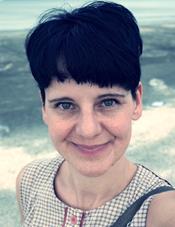
Silke Schmickl, curator, co-founder and director of Lowave since 2007, divides her life between Paris and Singapore. She studied Art History, French Literature and International Communications in Munich and Paris and graduated from Panthéon-Sorbonne University in 2001. A specialist in contemporary photography and video art, she has been a researcher at the German Art History Center since 2000. She has published over 60 art DVDs for Lowave and directed various research projects dedicated to avant-garde films from the Middle East, Africa and Asia. Since 2008, she has curated contemporary art exhibitions in partnerships with museums and biennials in Singapore, Paris, Guangzhou and Düsseldorf. In parallel to her curatorial activities, Silke Schmickl occasionally teaches in universities and art schools and writes articles on cinema and contemporary art.
